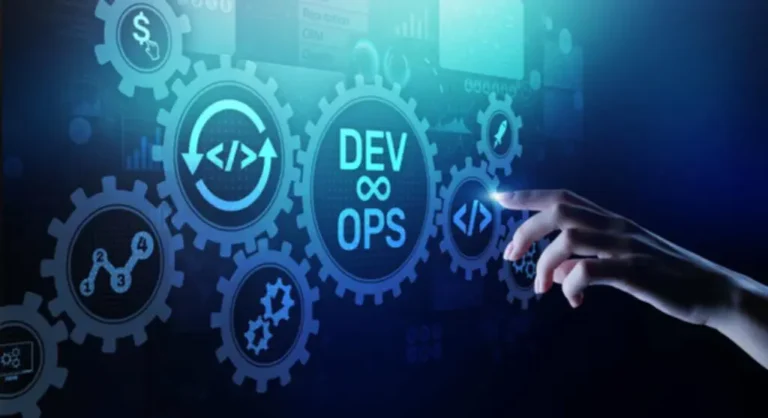The versioned and shareable configurations are also reusable across completely different environments. By default, Puppet makes use of a declarative, idempotent, and stateless approach, which permits it to take a node from an unspecified state and converge it to a known desired state. Furthermore, the configuration management plan ought to be frequently reviewed and up to date to mirror any modifications in the organization’s wants scm meaning software or business standards. This ensures that the plan remains related and aligned with the organization’s aims. Advanced analytics can predict potential issues before they impact the system, enabling proactive administration. Reporting instruments additionally facilitate communication with stakeholders, offering clear, concise data on system status, change histories, and compliance positions.
Able To Construct Your Customized Software Solution?
This course of helps forestall configuration drift, where the software program system progressively diverges from its intended state, resulting in potential efficiency points or safety vulnerabilities. The first step in efficient configuration management is figuring out and defining the parts that constitute the software program system. This involves precisely identifying software program artifacts, versioning them, and making a baseline for future reference. Version control permits improvement groups to save, retrieve, and collaborate on varied versions of code and configurations, facilitating parallel development and minimizing conflicts between adjustments. Professional and Enterprise versions of VIPM can be found for advanced configuration management capabilities.
Key Features Of Software Program Configuration Management Platforms
It ensures that the required backups, patches, and updates are readily available, minimizing downtime and guaranteeing the sleek operation of crucial business processes. Configuration administration instruments and practices allow builders to work concurrently on the same project, managing changes and resolving conflicts efficiently. By offering a unified platform for collaboration, configuration administration improves staff productivity, reduces delays, and fosters higher communication among team members. In the world of software development, configuring and managing software techniques efficiently is crucial to make sure smooth operations and dependable outcomes.
Configuration Standing Accounting
Through configuration management, you might be able to track down important elements that affect your setting, test your hypotheses, and then change your setup and tune your monitors accordingly. In this way, the entire system turns into a closed circle with inputs and feedback, whereas you retain visibility and management. Configuration administration is often used for reversible changes that do not require reboots or service interruption. But, it can be used for firmware updates, BIOS/UEFI updates, virtualization or Linux containers, and plenty of different use circumstances.
- It helps you retain up with the competitive market and shifting technological trends.
- Recent years have witnessed super developments in configuration management, allowing for the distant deployment of configuration changes with minimal code.
- This ensures that each change to a configuration file is reviewed by other team members, and dedicated to source control with a significant message indicating the character of the modifications.
- Baselines provide checkpoints to gauge progress and rollback points if defects are found.
With the project’s timeline, deadline, and exit standards outlined, the software program growth team proceeds to plan its execution. At this level, you also wants to be keeping monitor of the software configuration gadgets and organizing the basics like figuring out who is answerable for making changes and setting deadlines for their implementation. Configuration administration includes systematically managing and controlling changes to a system’s configuration all through its lifecycle. In easy phrases, it is a systematic process for growing and sustaining standardization in software program across various features, including performance, performance, and visual characteristics. The primary objective of CM is to control the evolution of complex methods and create vigilant record-keeping processes that streamline and speed up IT asset administration.
It allows organizations to plan and execute software program releases with precision, guaranteeing that the best set of options and enhancements are delivered to end-users. By maintaining a transparent and well-documented release process, configuration administration permits organizations to streamline their launch cycles, cut back deployment errors, and enhance customer satisfaction. In a collaborative development setting, sustaining consistency across totally different parts of software program techniques is crucial. Configuration administration offers mechanisms to outline and enforce consistent coding standards, model control practices, and documentation processes. This ensures that all staff members adhere to established pointers, facilitating seamless collaboration and minimizing errors resulting from inconsistencies.
It ensures consistent and dependable migration of modifications by following defined processes and infrastructure as code ideas, thus avoiding handbook, ad-hoc tasks. SaltStack is a configuration management and infrastructure automation solution used for high efficiency and scalability. It automates the process of configuring, provisioning, and orchestrating infrastructure parts throughout various cloud platforms, together with servers, networking gadgets, and cloud sources. Ansible is an open-source automation tool that simplifies software program provisioning, configuration administration, and application deployment throughout a whole infrastructure. It allows customers to automate repetitive duties, thus reducing guide effort and ensuring consistency throughout systems.
Specialized companies corresponding to “desktop as a service” or “business processes as a service” or “test environment as a service” or “communication as a service” (voice over IP) have all been created. Each framework uses a collection of configuration data recordsdata — normally YAML or XML — that are evaluated by an executable. Once a configuration administration platform is in place, groups have visibility into the work required for configuration duties. Configuration administration work could be recognized as dependencies for different work and properly addressed as part of agile sprints. DevOps configuration additionally brings system administration responsibility under the umbrella of software engineering.
Quality Assurance (QA)—Gains greater visibility into project part modifications and their role in future builds with an excellent version control system. Another common concept is branches, which enable parallel improvement of different versions or options of the software. For example, two programmers can every work on a separate branch, implement totally different options, and then later merge their branches again into the primary branch (sometimes referred to as trunk or master). These procedures have different names in various configuration administration requirements but the definitions are principally the identical across standards. SCM tools generally have expensive licensing so they will not be cost-effective for smaller organizations.
The discipline began in the united states military—namely the Department of Defense—which sought to increase the lifespan of its hardware tools without sacrificing performance over time. The army ultimately created the 480 sequence, a set of governing requirements for sustaining technical equipment, which developed into the ANSI–EIA–649 (the National Consensus Standard for Configuration Management) in 1998. CM is used to important due to the inventory administration, library management, and updation management of the items essential for the project. As software development progresses, the number of Software Configuration components (SCI’s) grow quickly. The overarching goal right here is to substantiate that our software program methods, as they are in situ, align with the underlying aims of the project. For occasion, confirming that changes to our baselines replicate what is included in relevant reports.
NinjaOne enables IT groups to watch, manage, secure, and help all their gadgets, wherever they’re, with out the need for complicated on-premises infrastructure. In contrast to proactive measures taken earlier than an issue emerges, an absence of maintenance, and care for details might provide larger hazards in the future. Constant system upkeep, record-keeping, and error-prevention checks that avoid duplication and omissions all contribute to the cost-effectiveness of configuration management. One must be capable of provide info on the project’s property, typically in terms of what is ready and the place it’s positioned, in addition to on its funds, including expense, budgeting, depreciation, etc.
CI/CD can be arrange in order that approved configuration change requests can instantly be deployed to a running system. Identification, planning, change control, change administration, release management and upkeep multi function product, and accessible in many various methods, throughout the multiple platforms. By securely storing historical variations, model management systems enable quick rollbacks to earlier states if wanted, guaranteeing stability and continuity. They additionally present a clear audit path of modifications, supporting transparency and accountability in the growth process. Configuration management platforms streamline system restoration and backup processes. By sustaining detailed information of system configurations and enabling simple replication, they facilitate quick restoration after failures or information loss incidents.
The automation aids in provisioning, and likewise makes servers builds and information heart setups deterministic and predictable. What’s the difference between Software Configuration Management (SCM) and Change Control Management? To me, Software Configuration Management is the process that controls software improvement. Change Control Management is used to regulate changes to a production surroundings, i.e., software as properly as hardware. This is in all probability not a rigorous, educational answer, however in my expertise, it looks like an excellent match.
Current and previous variations of a file are identified and tracked, with the flexibility for a consumer to request a copy of a earlier model of a file at any time. Traditionally, Chef is used to handle GNU/Linux and later versions run on Microsoft’s Windows platform as properly. The user of Chef writes recipes that describe how Chef manages server purposes (e.g., Apache, MySQL, or Hadoop) and the way they are to be configured.
Software configuration management (SCM) is important to take care of full management over your advanced system throughout its life cycle. It helps you retain up with the aggressive market and shifting technological tendencies. Software configuration management is considered one of the main issues during system implementation and maintenance. The fundamental strategy is to create a software repository, normally on a community drive or on-line, after which to maintain a working copy of the software program on your native onerous drive. Software changes are made in the working copy and then checked in to the repository.
Transform Your Business With AI Software Development Solutions https://www.globalcloudteam.com/ — be successful, be the first!

